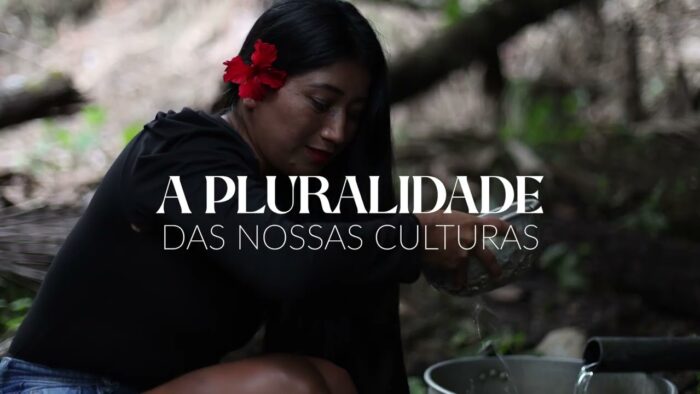Spain: LEARNING OFFICER (Interim position based in Barcelona)
Organization: Médecins Sans Frontières
Country: Spain
Closing date: 17 Apr 2017
GENERAL CONTEXT
Médecins Sans Frontières is an international independent medical-humanitarian organization, which offers assistance to populations in distress, to victims of natural or man-made disasters and to victims of armed conflict, without discrimination and irrespective of race, religion, creed or political affiliation.
The MSF movement is built around five operational directorates supported by MSF’s 21 sections, 24 associations and other offices together worldwide. MSF OCBA is one of those directorates. The operations are implemented by field teams and the mission coordination teams; together with the organizational units based in Barcelona, Athens and decentralised in Nairobi, Dakar and Amman. The field operations are guided and supported by 4 Operational Cells, the Emergency Unit and other departments supporting operations, including the Human Resources Department.
JOB ENVIRONMENT
The Learning Unit is integrated in the Human Resources Department, and works closely with all MSF-OCBA departments with the objective of providing adequate learning solutions to the diverse needs of the missions, teams and individuals across the organization. The learning needs addressed range from induction to managerial to technical issues, including many medical, logistics, human resources aspects that are central to the success of the operations.
The Learning Unit is in charge of providing advice to the organisation, generating new learning solutions, and coordinating the most formal part of the learning offer. The Learning Unit is structured around 3 main activity areas (face-to-face trainings, e-learnings and field support) and composed by two administrative staff, five Learning Officers, two Learning Managers and one Head of Unit. In complement to this, three Learning Referents are located in the Operations, Medical and Logistical Departments in order to provide dedicated support.
A growing proportion of the MSF-OCBA learning offer is available through the online platform MSF eCampus, which serves several sections of the MSF international movement. The overall budget of the formal trainings within MSF-OCBA is close to 1,5 M€, with more than 1500 students per year.
GENERAL OBJECTIVE
The Learning Officer, working under the supervisor of the Learning Manager, is responsible for the adequate execution of key elements of MSF-OCBA learning and training processes, in order to ensure the development and implementation of the learning solutions under his/her responsibility, looking at providing quality solutions that meet MSF-OCBA learning needs.
Main responsibilities may include any of the steps of a learning cycle, including learning needs analysis, solutions design, development, implementation and/or evaluation. These are often done with a combination of internal clients (notably staff from the projects or the headquarters) and internal and external resources (such as subject matter experts and instructional designers). Projects may be both short (implementation or improvement of existing trainings) and long in nature (development of complex trainings that combine a diversity of objectives). Advice may include pedagogic support and orientation to Departments and field projects and missions. Learning activities may exceptionally require displacement to countries where MSF-OCBA has projects.
MAIN RESPONSIBILITIES AND TASKS
· Participates at HQ and Field learning needs assessment processes by providing technical advice to line management and relevant subject matter experts in the detection and analysis of relevant needs.
· Identifies and proposes appropriate learning solutions and strategies to close identified competencies gaps and oversees and supports the planning and implementation of HQ and Field Learning Plans.
· Explores innovative learning solutions by maintaining an active networking with reference Training and Education Institutions and Providers and looks for opportunities for alliances and partnerships that can enrich the portfolio of available MSF OCBA learning solutions and resources.
· Designs and develops, in collaboration with subject matter experts and technical referents, new or revised training programs focusing on considering different learning modalities: face-to face, online, offline, etc.
· Participates in the definition of new learning models than can respond to MSF learners’ characteristics and to the specifics presented by their job contexts.
· Implements processes and tools to enhance and formalize on-the-job training activities as well as informal learning ensuring that these are acknowledged as a valid medium to train and develop staff.
· Coordinates the organization of MSF Training Programs ensuring that contents are up-to-date and training methodologies follow adult learning principles and consider diversity of program participants.
· Manages implementation of training events and oversees appropriate conduction of training sessions (online and face-to-face) promoting adequate team dynamics and learning environment.
· Provides Train the Trainer support to facilitators responsible for preparing and conducting training sessions.
· Facilitates and co-facilitates training programs/modules in the area of expertise both at HQ and field level.
· Participates in the development of evaluation methodologies and tools focusing at learning-transference-impact phases; implements evaluation plans for the programs assigned.
SELECTION CRITERIA
Education and Experience
· Bachelor or Master Degree Education and/or technical training in Education, Instructional Design or Pedagogy.
· Experience in Training of Trainers (ToT) activities.
· Knowledgeable of adult learning principles and its application at program design and development.
· Experience in delivering training and facilitating student-centred learning strategies.
· 3-5 year experience working in training & development functions, preferably in international and multi-cultural settings.
· Experience with e-learning.
Competencies
· Commitment to MSF’s Principles
· Cross-cultural Awareness
· Behavioural Flexibility
· Stress Management
· Analytical Thinking
· Results and Quality Orientation
· Service Orientation
· Planning and Organising
· Teamwork and Cooperation
Other
· Motivation for working in humanitarian sectors.
· Flexible working hours during training programs implementation.
WORKING CONDITIONS
· Position based in Barcelona at MSF-OCBA headquarters
· Full time job.
· Interim position for 6 months
· Annual gross salary: 29187,26 €, divided into twelve monthly payments + Secondary benefits based on MSF-OCBA Reward Policy.
· Starting 8th May 2017
How to apply:
To apply, all applicants should please send their CV and cover motivation letter under the reference “**Learning Officer**” to recruitment-bcn@barcelona.msf.org
Please submit your CV and cover letter in ONE file and name the file with your LAST NAME
Closing date: April 17th, 2017
Replies will only be sent to short-listed candidates.
Médecins Sans Frontieres, as a responsible employer, under article 38 of “Ley de Integración Social del Minusválido de 1982 (LISMI)” invite those persons with a recognized disability and with an interest in the humanitarian area to apply for the above mentioned position. Médecins Sans Frontieres, as a responsible employer, under article 38 of “Ley de Integración Social del Minusválido de 1982 (LISMI)” invite those persons with a recognised disability and with an interest in the humanitarian area to apply for the above mentioned position.


